Fast Company features our Leuchtturm 1917 Notebooks in this informative article, How To Buy A Paper Notebook That Brings You Joy, about picking the right paper notebook.
"2,000 years on, the notebook is still a great solution. From Muji to Moleskine, here's how to choose a notebook that's right for you.
A simple notebook has a mess of advantages over a tablet: It never needs to be charged, it’s cheap, it’s lightweight, it produces a tactile feeling that styluses haven’t yet managed to reproduce. It might even encourage creative thinking, make you more focused, and keep you sharp as you get older. And it’s always booted up to the right app for taking notes. To pull out a thoughtfully chosen notebook and a nice pen conveys that the owner is classy and undistracted by whim.
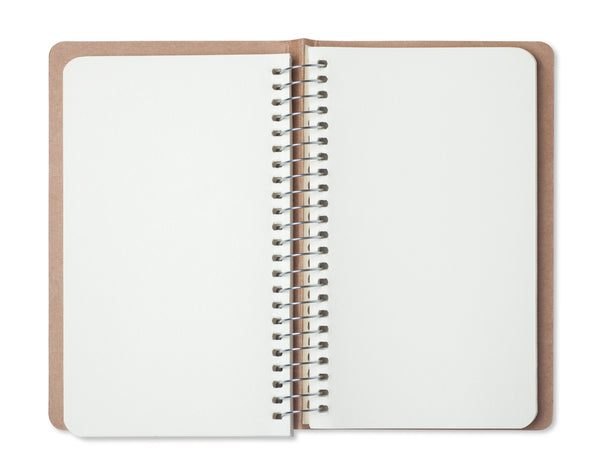
But that doesn’t mean it’s easy to pick a good notebook. "Notebooks," says Ana Reinert of the office gear site The Well-Appointed Desk, "are very much like cars. My perfect notebook is going to be very different, like my choice in car, from someone else whose needs or line of work requires different parameters." And notebooks are as varied as our vehicles: They come in different sizes, shapes, materials; different bindings, paper weights, line widths (or squares, or no lines at all), hard cover, soft cover, treated paper, untreated paper—and that’s just on the inside. To recommend a single notebook for everyone would be to recommend a notebook to nobody.
A better strategy is to learn about different types of notebooks, so that you are best informed to make your own decision while avoiding the obvious clunkers.
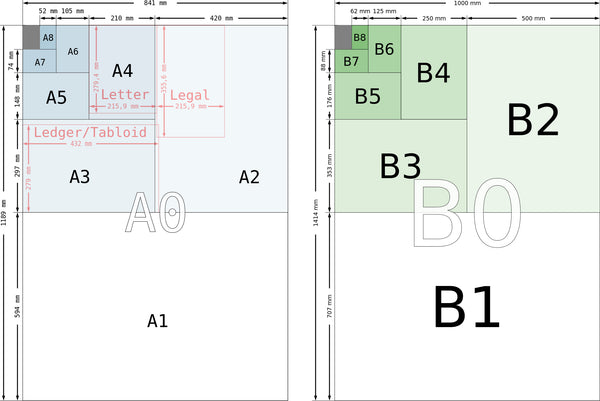
SIZE
First, let’s talk size. Notebook sizing is almost—but not quite—standardized, and differs depending on whether you’re looking at European or U.S. sizing. European sizes, generally speaking, come in an A, B, and C series, ranging from A0 to A10, B0 to B10, and C0 to C10. These all share the same ratio, so they’re the same shape, but different sizes: the smaller the number, the bigger the paper. The way these sizes work is a very pretty work of arithmetic: the basic aspect ratio of all A-series paper is 1:√2 (which is about 1.14). A0, the largest size, which you’re pretty unlikely to ever see, has an area of one square meter, with dimensions of 33.1-by-46.8 inches. Each successive size works by halving the larger dimension, and keeping the smaller one the same, so the A1, the next size down, has dimensions of 23.4 by 33.1. Wikipedia has a nice graphical representation of this; it shows how European paper sizes resemble a nautilus shell, which is fun.
The B and C series work the same basic way, but come in different sizes. The B series isn’t super common, but it’s still used every once in a while; probably the most used B-series size is your passport, which is standardized at a B7.

U.S. sizes are much more casual: The most common are Letter, Legal, Half-Letter, and Junior Legal, plus one informally called "pocket-sized." Letter is your typical 8.5-by-11-inch paper, and roughly corresponds to an A4. Half-Letter corresponds to roughly an A5, about 8.5 by 5.5, and is about the size of your Classic Black Moleskine Notebook. Legal is a little narrower, at 8.5 by 14, and Junior Legal is a little smaller than that, at 8 by 5. Those yellow paged, blue-lined, top-bound legal pads are either Legal (the big ones) or Junior Legal (the smaller ones).
Smaller than that, you’ve got a bunch of sizes that barely or don’t have names: "Pocket-sized" usually refers around 3.5 by 5, but in the U.S. can sometimes refer to a European A6, which is roughly 4 by 6. On the other side, there are some larger formats, like Tabloid (which is an 11 by 17), but Reinert notes that anything bigger than an A4 is a specialist’s notebook for artist’s sketch pads or architect’s pads. Architects even have their own system, adhering to a 4:3 ratio and ranging from "Arch A" to "Arch E" (Arch E, the largest, can have numbers after it to go even larger; Arch E1, Arch E2, that kind of thing). If you need one of those, you probably know it already.
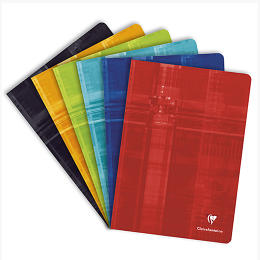
Clairefontaine Classic Notebooks
What size you want largely depends on how you’ll use the notebook. Pocket-sized notebooks tend to be thin and light, but often have very few pages, sometimes under 50. Half-Letter and Junior Legal sizes are good all-purpose notebook sizes; if you’re not sure what size to get, that’s probably what you want. Letter-sized notebooks are a bit big for the office worker; they conjure up images of schoolchildren, although there are more adult-designed ones that look great and offer lots of writing space. Try a Clairefontaine ($15), which comes with great reviews for its paper and bindings.
BINDING
Once you’ve settled on a size, you have to look at binding, which is the method by which sheets of paper are bound together into a notebook. There are several different types of binding, and some tend to be found more often with certain sizes of notebook. Staple binding, for example, is most often found with pocket-sized notebooks. Spiral rings are more common in Letter-sized notebooks.
The experts I spoke to generally prefer stitched bindings, though Ian Hedley of Pens! Paper! Pencils! has no issue with staples. "Pocket notebooks are usually stapled and that works fine for that size," he says. Glue binding—though Hedley says it can sometimes be done well—probably isn’t your best bet: glue-bound notebooks are less sturdy and tend to have trouble laying flat. And serious notebook people don’t often like spirals, noting that they tend to get bent out of shape and make the notebook impossible to lay completely flat.
Stitched bindings, or a combination of stitching and glue, don’t have these issues: That style is lightweight, allows the notebook to lay flat, and keeps the pages sturdily in place. You want a stitched binding.
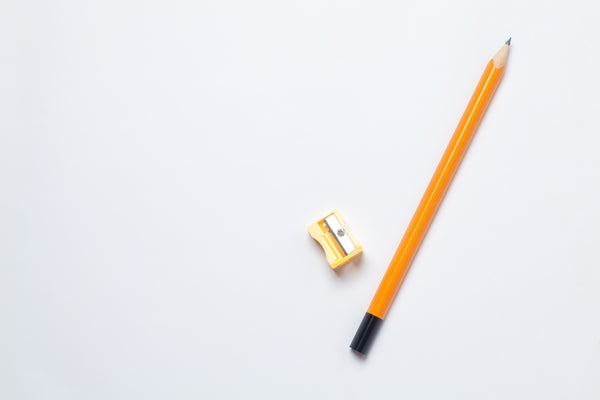
WEIGHT
Paper weight is a tricky subject. You might think that thicker paper is better, but that isn’t always the case. Hedley says, "Funnily enough, if you’re planning on using a fountain pen, thick doesn’t necessarily mean good" because the ink from a fountain pen can bleed into thick paper, causing "feathering." But too-thin paper can result in tearing or leaving indentations on other pages, a problem known as "ghosting" and commonly seen in old detective movies, where the detective lightly shades in a notebook page with a pencil to reveal what was indented when someone wrote on the preceding page.
Paper is measured by weight, but that won’t really tell you that much, given that heavier isn’t necessarily better. The best bet, if you’re really serious, is to go to a store and try writing on the paper with the pen you’ll be most often using. Different people prefer different textures of paper—Reinert calls this the "tooth"—which is not an easy metric to objectively describe. Generally, though, unless you’re using a fountain pen, the notebooks we recommend will have a tooth that most people will find pleasing.
If you are using a fountain pen, both Reinert and Hedley mention Tomoe River ($15), a Japanese company renowned for its super-thin yet beautifully sturdy paper. It’ll take longer for the ink to dry on this paper, but it’ll look spectacular when it does.
PAGE COUNT
In terms of the number of sheets you want, that can also vary. One option, if you’re not sure, might be a removable-sheet system. Hedley likes the Arc, which is available at Staples ($11 and up) and will allow you to remove and replace sheets on its disc-like spine. Being able to remove paper without tearing it, like you would in a spiral notebook, makes the Arc prized among notebook-philes. And the paper is much higher quality and easier to remove than, say, a perforated glue-bound legal pad.
COVERS
Another major choice you'll have to make between notebooks will be between soft versus hard covers. "While a hardcover can be more durable and also provide a more rigid surface for writing on your lap or on the go, some people prefer a softcover notebook or a more flexible cover because it will often allow folding the book in half (rolling the cover back on itself to take up less space on your lap or desk)," says Reinert, who also notes that a soft cover notebook can become very personalized, taking the shape of the owner’s pocket. A hard cover can seem more formal, more professional, but that really depends on your office environment.

BLANK, RULES, AND GRIDDED
The final factor you must consider is the style of the pages. The most common styles are blank, ruled, and gridded (sometimes called graph paper). Lines and grids come in different widths, but are fairly standardized (college ruled is the standard, at 7 mm, and graph paper standardly comes in at 5 mm.) Most notebook makers offer a range of different sheet styles, but largely the choice comes down to personal preference. Some of the notebook aficionados I spoke to only use blank pages, but others swear by traditional ruled lines. Graph paper is good for those with especially tiny handwriting, but is less common now for, well, graphing; computers have tended to take over mathematical and sketching work.

Field Notes $10 for three [Photo: Flickr user Cliff Hutson]
BRAND
The classic Field Notes ($10 for three) come recommended—they are tiny, pocket-sized notebooks with only 48 pages in them. Ideal for note taking on the go, they are sturdy, cheap, and replaceable, with an outdoorsy vibe. An alternate option, with a bit more color: Nock Co offers a three-pack for the same price ($10).
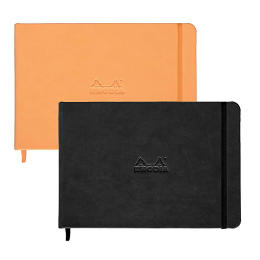
Landscape Rhodia Webnotebooks
Moleskines did not come recommended by either Reinert or Hedley. Instead, they suggest the slightly cheaper Rhodia Webnotebook ($25), which is about the same size and shape, but boasts superior quality paper that won’t bleed ink. "They look a little like Moleskines, but they are infinitely better," says Hedley.
Another option in either pocket-sized or [Medium-sized]: the Leuchtturm 1917 ($12-17), available in a bunch of fun colors. It gets great ratings when it comes to paper quality, binding stability, and durability.
For something super cheap, Muji’s notebooks, mostly made of recycled material, come highly recommended by many, including our own editor of Fast Company Digital, Anjali Mullany. They come in a variety of sizes and with a few different bindings, but rarely cost more than $5 and always look sleek and simple.

Traveler's Notebooks
If you want something elegant and minimalistic, try the Japanese-made Traveler’s Notebook ($47), which both Reinert and Hedley recommend. Its leather cover will age nicely, and though it’s expensive, you can refill the cover with paper, so you can basically use it for life. Story Supply Co makes a similar, slightly cheaper version ($35).

Write Notepads & Co.
For a more traditional look, Reinert suggests the spiral-ringed Write Notepads ($16), which have that old, weathered journal-type feel.
But these suggestions should just get you started. The world of notebooks is a big one, with devotees all over the globe comparing notes on feathering and ghosting on forums like Reddit and old-school BBS forums like The Fountain Pen Network. There’s an excessive, obsessive amount of information out there. If only you had a place to write all that information down . . ."
"WE TRIED OUT MOLESKINE'S MARRIAGE OF NOTEPAD AND IPAD:"
(Via Fast Company)
